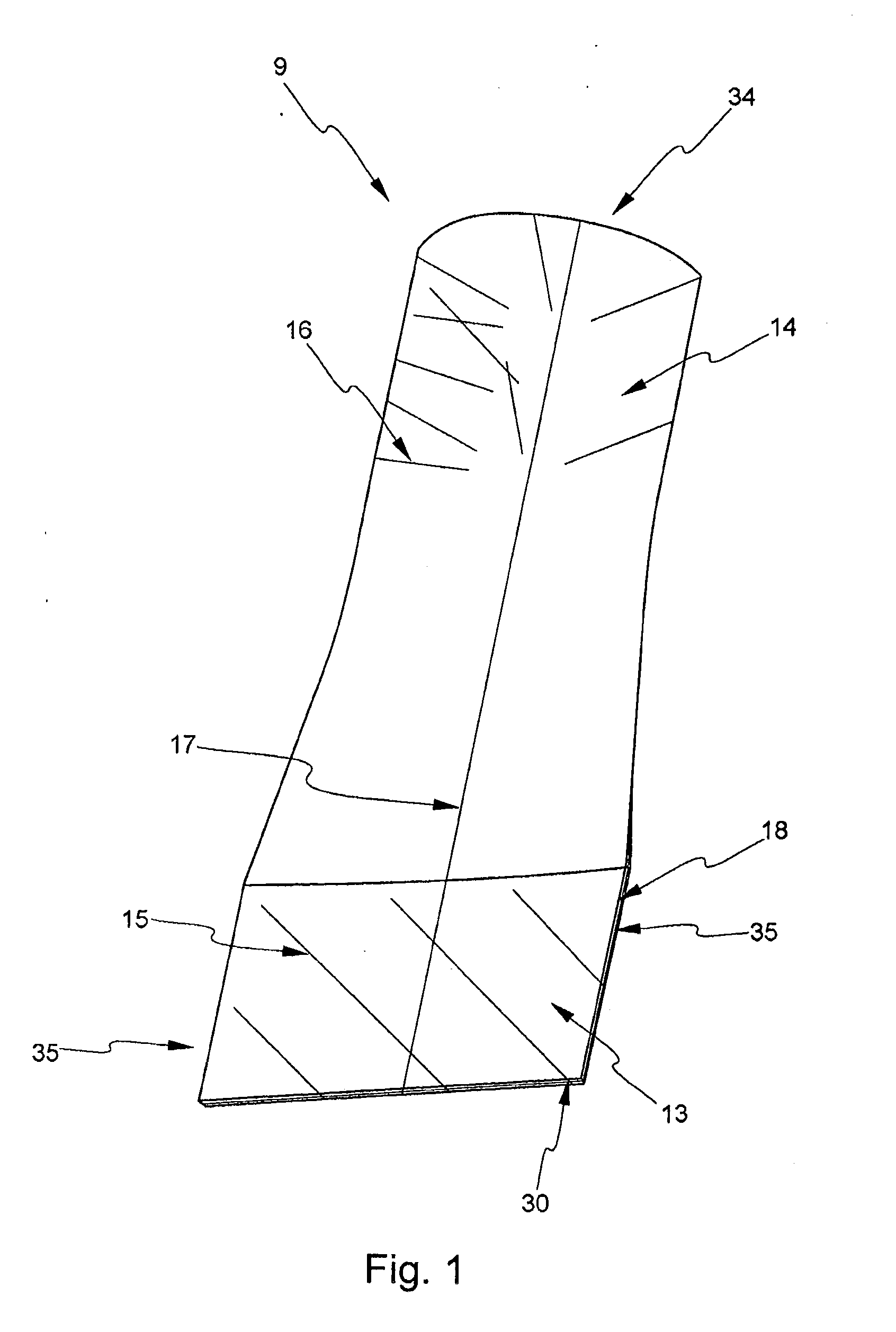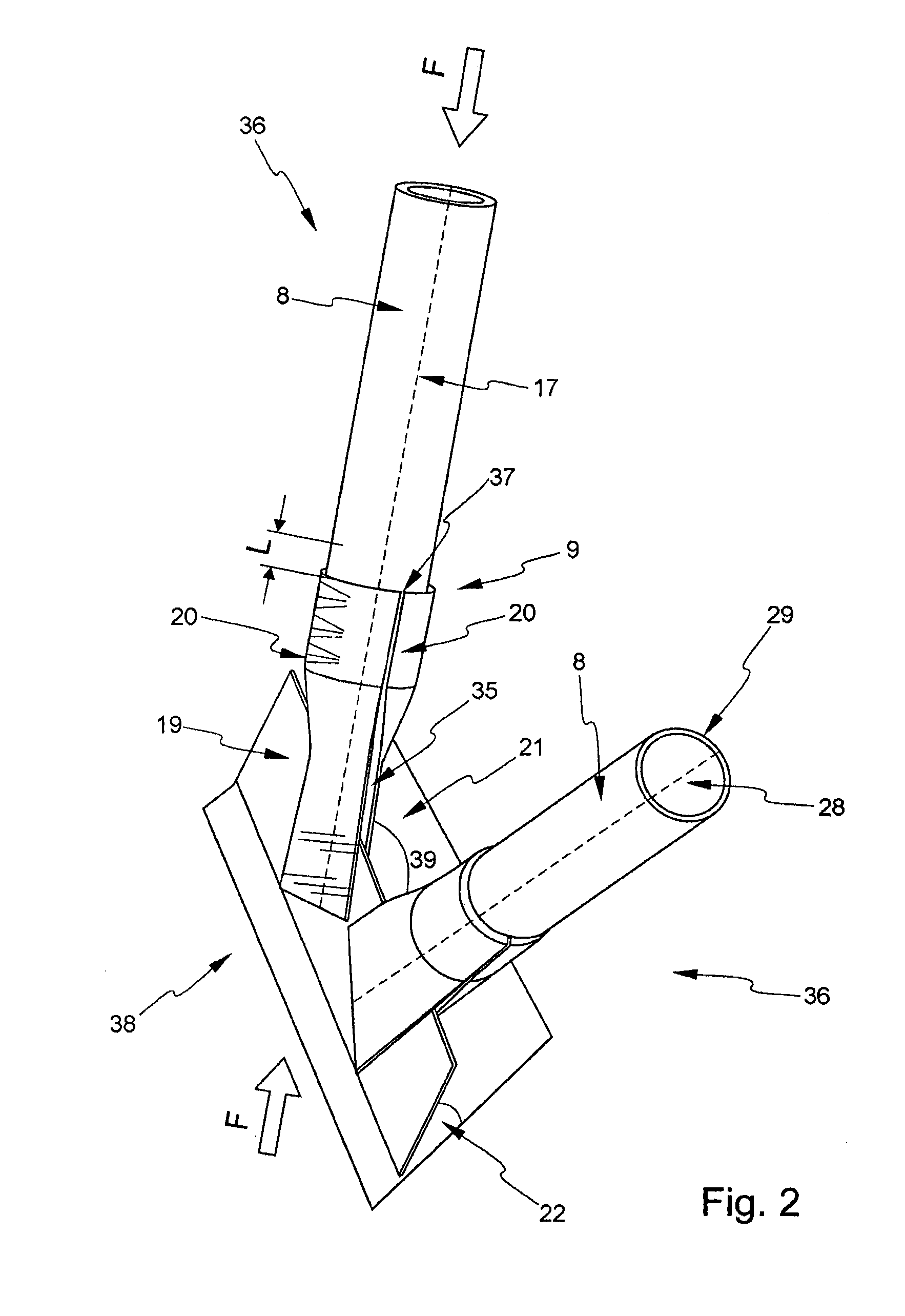Support structure for a wing
a support structure and wing technology, applied in the field of statics, can solve the problems of increasing the weight of the highly loadable framework, the inability of sarma® rods to meet the requirements of high load, and the need for relatively solid bars. to achieve the effect of improving the support structur
- Summary
- Abstract
- Description
- Claims
- Application Information
AI Technical Summary
Benefits of technology
Problems solved by technology
Method used
Image
Examples
Embodiment Construction
[0097]The examples described and drawings rendered are illustrative and are not to be read as limiting the scope of the invention as it is defined by the appended claims. The features shown in the drawings are not on scale. Same or similar features in different drawings are labelled with the same or similar reference signs.
[0098]FIG. 1 shows a top view of a connection element 9. The connection element 9 forms the transition from a round cross section 34 to a narrow rectangular cross section 30. On its round end 34 or on its round cross section 34, which may receive a tube, the connection element 9 comprises an aperture for accommodating a tube. In the non-fastened state, an inserted tube or bar element may be slid along the accommodation region or attachment region 14. As an alternative, the accommodation region 14 may also be inserted into a tube. In the non-fastened state, a tube inserted into the attachment region 14 may be slid along the center line 17 or may be rotated on the c...
PUM
 Login to View More
Login to View More Abstract
Description
Claims
Application Information
 Login to View More
Login to View More - R&D
- Intellectual Property
- Life Sciences
- Materials
- Tech Scout
- Unparalleled Data Quality
- Higher Quality Content
- 60% Fewer Hallucinations
Browse by: Latest US Patents, China's latest patents, Technical Efficacy Thesaurus, Application Domain, Technology Topic, Popular Technical Reports.
© 2025 PatSnap. All rights reserved.Legal|Privacy policy|Modern Slavery Act Transparency Statement|Sitemap|About US| Contact US: help@patsnap.com



